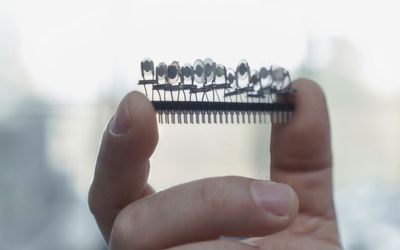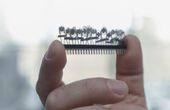Microchip Technology PIC32CZ CA90 Curiosity Ultra Development Board
A hardware platform for evaluating the Arm Cortex-M7 processor-based PIC32CZ CA90 MCUs.
Technical Specifications
| Product | Evaluation Board |
| Type | Development Boards & Kits - PIC / DSPIC |
| For Evaluation Of | PIC32CZ CA90 |
| Security | Secure Boot, Secure TLS, Encryption/Decryption |
| Compatibility | Arduino Uno R3, Mikroe Bus, Xplained Pro |
| Connectivity | Ethernet, CAN FD, HS USB, I2S, I2C, SPI |
| Applications | Industrial Automation, Internet of Things (IoT), Consumer Electronics, Prototyping, and Development of Bluetooth Audio, Robotics, and other Proof-of-Concept Designs |
Overview
This development board is fully supported by the MPLAB Integrated Development Environment (IDE) and MPLAB Harmony, providing a seamless integration for development workflows. The board also includes a Virtual COM port, a Data Gateway Interface, and an onboard temperature sensor. With an onboard programmer/debugger, the board is ready for immediate use without the need for additional hardware. This makes the board an ideal starting point for developers looking to explore the capabilities of the PIC32CZ CA90 series.
Microchip Technology PIC32CZ CA90 Features
Microchip Technology PIC32CZ CA90 features a microcontroller with a 300MHz clock speed, 8MB of flash memory, and 1MB of SRAM. The PIC32CZ8110CA90208 microcontroller is a member of the PIC32CZ family of microcontrollers from Microchip Technology. This family of microcontrollers is based on the MIPS32 architecture and offers a wide range of features, including high performance, low power consumption, and extensive peripheral support. The board also includes a Virtual COM port, a Data Gateway Interface, and an onboard temperature sensor.
The PIC32CZ CA90 development board is a great platform for developing applications with the PIC32CZ8110CA90208 microcontroller. The board provides the necessary hardware resources to get started, including a power supply, a programmer/debugger, and expansion connectors. This simplifies the development process with capabilities for real-time programming and debugging, without the need for external tools.
This versatile development board is equipped with a range of connectivity options, including interfaces for Arduino Uno R3, Mikroe Click boards, and Xplained Pro expansion boards. These features make it an ideal choice for developing a wide array of applications, from Bluetooth audio and robotics to various proof-of-concept designs.
Getting Started with PIC32CZ CA90 Development Board
Follow these steps to get started with the Development Board:
1. Connect the development board via USB to your computer to establish a connection for programming and debugging.
2. Install MPLAB IDE and MPLAB Harmony on your development machine to get started with software development.
3. Utilize the Arduino Uno R3, Mikroe Click boards, or Xplained Pro expansion interfaces to add sensors, actuators, or communication modules to your project.
4. Use the MPLAB IDE and MPLAB Harmony to develop, debug, and deploy your application on the PIC32CZ CA90 MCU.
5. Use IDE for an integrated approach to configure your MCU, manage libraries, and streamline the development process.
6. Use the Virtual COM port and Data Gateway Interface for real-time monitoring, and debugging of your application.
Applications
The Microchip Technology PIC32CZ CA90 is a powerful tool for developing various applications, from complex multimedia projects to advanced control systems. Its processing capabilities, coupled with extensive connectivity and expansion options, make it suitable for developing applications in areas such as audio processing, IoT devices, robotics, and smart home systems. The board supported by the robust MPLAB development ecosystem, ensures that developers can prototype ideas and innovate efficiently. Whether for educational purposes, generic projects, or professional development, the PIC32CZ CA90 Curiosity Ultra Development Board offers a versatile platform for exploring the possibilities of Microchip's advanced MCUs.
Where to find it

Mouser Electronics
Mouser Electronics is a worldwide leading authorized distributor of semiconductors and electronic components.










